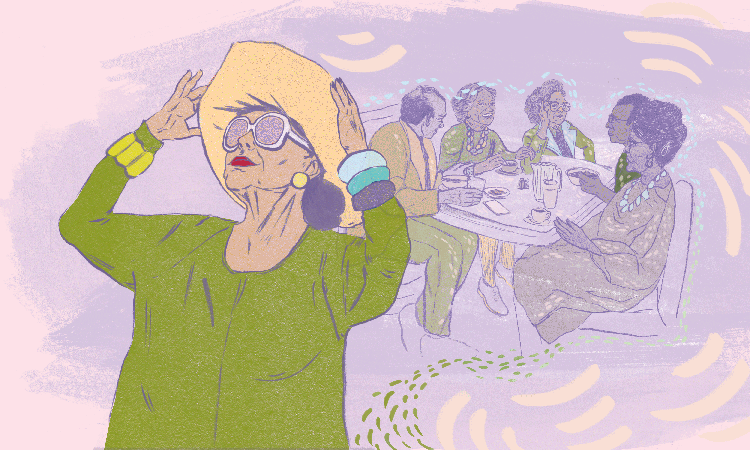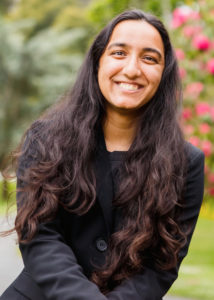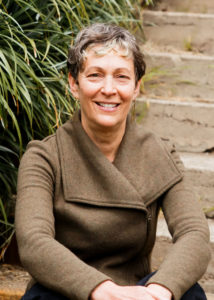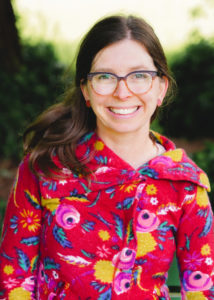By joining the Beacon Hill Village in Boston, older people commit to helping each other while they stay in their own homes. And they have plenty of fun while doing it, says MIT AgeLab director Joseph F. Coughlin.
Joan Doucette was sipping coffee in a small café at MIT, her bicycle resting next to her. The Institute tends to frown on bringing bicycles into buildings, but only a hard soul could have stopped Doucette from wheeling in hers, with its ribbons streaming from the handlebars, white tires and a front basket filled with yellow and pink flowers.
The demeanor of the 75-year-old cyclist was just as sunny. Doucette peered up from a travel itinerary for a trip to Chicago. “There’s going to be 20 of us going,” she said. “We’re going to take a river trip. We’re going to go to the museums … then we’re going to the Russian tearoom. We’ve got a tour of the skyscrapers. And a lot of us are going to the Frank Lloyd Wright house. So, very busy.”
Doucette spoke with an English accent redolent of her native Surrey, where she was born in 1938. As a young woman, she was a nanny and became involved with the US embassy, which assigned her to foreign posts where she cared for diplomats’ families. When the father of one of those families died, she moved with the mother and kids to Massachusetts. “I was their nanny until I married and their mother remarried,” she said.
In 1970, Doucette began a career at MIT, moving among the Institute’s libraries, alumni relations department, Center for Transportation Studies (now the Center for Transportation and Logistics, home of the AgeLab), industrial relations, corporate development and more. She retired at 62, after having worked at MIT for 25 years. “What am I going to do with my days?” she wondered. The answer that presented itself seemed opportune at the time. She had no idea how revolutionary it would become.
“The Beacon Hill Village isn’t a village per se — it’s a loose confederation of older people who want to stay in their own homes, interact with friends, and eat at their favorite restaurants.”
Doucette and her husband moved to an apartment on Beacon Hill, one of the oldest areas in Boston. She didn’t know anyone there and worried about her social life. Then she received an invitation to join the Beacon Hill Village. But it’s not a village per se. It’s a loose confederation of older people who live on Beacon Hill, who, instead of moving to a community or facility devoted to old age, want to stay in their own homes, interact with their friends, eat at their favorite restaurants, and attend their favorite cultural events.
Many of the Village’s founders had seen elder care gone wrong and were resolved to find a better way. “Each of us had witnessed firsthand the distress our relatives experienced as they aged: a mother in a retirement community in Florida who felt lonely and abandoned; a parent in a nursing home, marginalized and overdrugged; an uncle with very limited means and no immediate family to help out,” founding member Susan McWhinney Morse has written.
In 1999, when the Beacon Hill neighbors began to consider creating something different, the story pervasive in the culture was clear. When you grew old, there was only one thing to do: move, whether it was to an independent or assisted living facility, country-club retirement community or nursing home. The neighbors were determined to tell a new story.
The Village’s members agreed to help each other with the small things that come up and to help each other find assistance for the big things. Today, in exchange for annual dues of $675, the Village offers help with tasks like grocery shopping, pet care, light housework and small repairs. For issues that pose a greater challenge — including health, caregiving and financial needs — the organization curates lists of trusted service providers, who sometimes even give member discounts.
The Village also provides access to vetted drivers trained in transporting elderly people who need special care. “They’ll take you shopping for your groceries. If you’re having an operation, they’ll come and pick you up and take you home,” said Doucette. “When I had the new knee put in last September, somebody came and picked me up.”
“The Beacon Hill philosophy has not only endured, it’s spread. In the US, there are at least 190 “villages” that use its model.”
Perhaps the most essential aspect of life in Beacon Hill Village is what might sound like the least important: the fun. Doucette and her husband joined when the Village first opened to the public in 2002 and began building out its membership base as well as relationships with vendors, providers and contractors. Doucette helped build its social schedule, which, these days, is full.
“On Mondays we have a movie group that come in my house, and we have tea, and I stream a movie. And there’s about ten of us do that. And on Tuesdays, twice a month, there’s another group that meets down at 75 Chestnut” — a snug Beacon Hill restaurant — “and we talk about anything we want to, mostly about theater and movies,” she says. “And that’s called Terrible Tuesdays. And then every Wednesday a group meets on Charles Street in one of the restaurants there. And we talk world affairs mostly . . . And then on Thursdays I got my husband to go and do First Drink, because that’s for the men.” Doucette’s groups are so popular, she says, that she’s started to set up satellite gatherings in other parts of the city.
My immediate response was skeptical when I heard something special was going on across the river from my MIT office. Older people helping each other sounded great in theory, but I wondered how long such an altruistic collective could last. What I found: The Beacon Hill philosophy has not only endured; it’s spread. In the US, the Village to Village Network facilitates the development of Beacon Hill-esque communities. According to the Network, there are at least 190 villages built on the “Beacon Hill model” in all but four states, with 150 in development.
One 2014 study found that a quarter of Villages along the Beacon Hill model are actively working to improve their communities’ attitudes toward older adults. Every day, by going out and creating a positive impression on the people around them, the members of Beacon Hill and other Villages dispel the old myth that elders are unfit to co-mingle with society.
“The majority of what Villages provide their members comes from volunteers, most of them members who are younger and healthier.”
As new Villages have sprung up, several themes have emerged. One is the development of a pay-it-forward ethos. Paid staffs tend to be small, averaging between one and two-and-half full-time employees, so the majority of what Villages provide their members comes from volunteers, most of them members. They’re typically younger and healthier — people in their 50s, 60s and 70s — who provide occasional care to older members in their 80s and 90s. This care isn’t medical or care with the activities of daily living, which usually requires help from professionals or family members. Rather, Villagers assist each other with the issues that come up over the course of a full life.
At the San Francisco Village, member Bill Haskell said he had joined hoping to “pay it forward” to the local older community. “Within 30 days, my partner found out he had to have open-heart surgery. So we needed not to volunteer, we needed help. I needed a lot of help because I’m his primary caregiver,” he said. “Bob had a difficult surgery with a lot of complications. He was in the hospital for two weeks” — far longer than the expected three days. “Then there’s the home period.”
The Village provided Bill with vetted referrals for home care. For times when he needed to run out to the store or the gym, it sent a volunteer to sit with Bob. “People who are members brought over meals when I couldn’t cook any longer,” Bill said. “People we didn’t know brought over dinner for us.”
As appealing as this pay-it-forward mentality may sound, there are drawbacks. For one thing, it’s hard to market. Beacon Hill started as an organization devoted to mutual care and later took on its social-club vibe. The intrinsic focus on care can scare off potential members who don’t think of themselves as patients.
Beacon Hill also doesn’t offer an entirely coherent solution to the problem of identity in retirement. But in many ways, this is a feature, not a failure. Beacon Hill embraces complexity. Members are free to not just pursue a leisure-oriented idea of retirement but other aspirations, including caregiving, interacting with other generations, patronizing cultural institutions, volunteering and working.
“A wider variety of workshops, classes, clubs and volunteer jobs would increase the visibility of this model — turning Beacon Hill Village into, well, a beacon on a hill.”
If Beacon Hill’s embrace of complexity over clarity makes sense for its members, it also poses a liability in terms of defining a new way of life in old age. It’s hard for its subtle, complicated message to compete with the volume, vividness and simplicity of that broadcast by traditional senior communities. However, Beacon Hill could fight back by doubling down on its own model and offering more services and activities. Increasing its number of social events might allow those in the midst of a transition away from a primary career to wrap themselves in new interests. And a wider variety of workshops, classes, clubs and volunteer jobs would increase its visibility — turning Beacon Hill into, well, a beacon on a hill.
The barrier to achieving this kind of scale is considerable. Joanne Cooper, part of the membership committee at Beacon Hill, said bringing in new members is a challenge. “Two new members come in, four leave, one way or another,” whether they’re “moving to a more structured setting or, unfortunately, passing away.”
The relatively new San Francisco Village has 300 members. Nationwide, said San Francisco leader Kate Hoepke, Village memberships can be measured in the low tens of thousands. “You know, it should be ten times that many.” She wonders if the issue is a lack of funding or visionary leadership. The Village to Village Network’s pattern of growth — fast to spread across America and the globe, yet slow to flourish in sheer membership — might come down to the fact that “so much has happened in such a short period of time. That infrastructure isn’t there yet.”
If you, like me, want to live in a world where older adults and their kids aren’t antagonists but invest in each other, work for each other and help each other, then the Village movement is a good guide to follow. The Beacon Hill model is finding fertile ground in countries such as the UK and Germany. Other experiments in age integration are springing up as well. One program in Germany and Switzerland, Wohnen für Hilfe or Housing for Help, subsidizes the rent of carefully screened students who want to live in older people’s homes and help out with minor chores. The UK has a similar program called Homeshare. A law in Germany provides the 82 percent of elders who say they do not want to live in a nursing home with a grant of up to €10,000 to establish shared, community apartments, with a monthly subsidy of up to €200 per tenant.
The Beacon Hill Village and others like it aren’t perfect. They’re small, and they don’t leverage mobile technology as well as they could to improve connectedness. They’re limited mainly to urban areas, and they tend to skew middle-class-and-up, leaving people out. Still, as new generations of longevity-economy products make it easier to do more in old age than merely recreate and relax, it’s easy to envision something resembling the Beacon Hill Village emerging from our current state of frontier chaos.
Original post: ideas.ted.com
Jan 4, 2018 / Joseph F. Coughlin
Photo: Krystal Quiles
Excerpted from the new book The Longevity Economy: Inside the World’s Fastest-Growing, Most Misunderstood Market by Joseph F. Coughlin. Published by PublicAffairs, an imprint of Hachette Book Group. Copyright © 2017 Joseph F. Couglin.
Watch Joseph F. Coughlin‘s TEDxBoston Talk: Aging as an extreme sport.
ABOUT THE AUTHOR
Joseph F. Coughlin is the founder and director of the MIT AgeLab, a multi-disciplinary research program created to understand the behavior of the 50+ population.








 Sara joined the team in 2018. She brings with her 20 years of experience in community development, philanthropy, and organizational management. She completed her bachelors at George Washington University and her masters at UC Berkeley. Her career focus has been on evaluating how community groups run from year-to-year and strengthening daily processes to increase institutional success. Sara loves travel and global development issues, particularly a non-profit she founded 10 years ago focusing on students’ access to school in Cambodia. Sara is raising her family here in San Francisco.
Sara joined the team in 2018. She brings with her 20 years of experience in community development, philanthropy, and organizational management. She completed her bachelors at George Washington University and her masters at UC Berkeley. Her career focus has been on evaluating how community groups run from year-to-year and strengthening daily processes to increase institutional success. Sara loves travel and global development issues, particularly a non-profit she founded 10 years ago focusing on students’ access to school in Cambodia. Sara is raising her family here in San Francisco. Maya is a public relations and communications professional with more than a decade of experience; her expertise includes consumer products and technology PR, as well as event management and content development. She has been a pro-bono consultant with the Taproot Foundation since 2012, and has participated in three service grants to date. Maya attended the University of California at Los Angeles (UCLA) and graduated with a BA in mass communications and a minor in political science.
Maya is a public relations and communications professional with more than a decade of experience; her expertise includes consumer products and technology PR, as well as event management and content development. She has been a pro-bono consultant with the Taproot Foundation since 2012, and has participated in three service grants to date. Maya attended the University of California at Los Angeles (UCLA) and graduated with a BA in mass communications and a minor in political science.